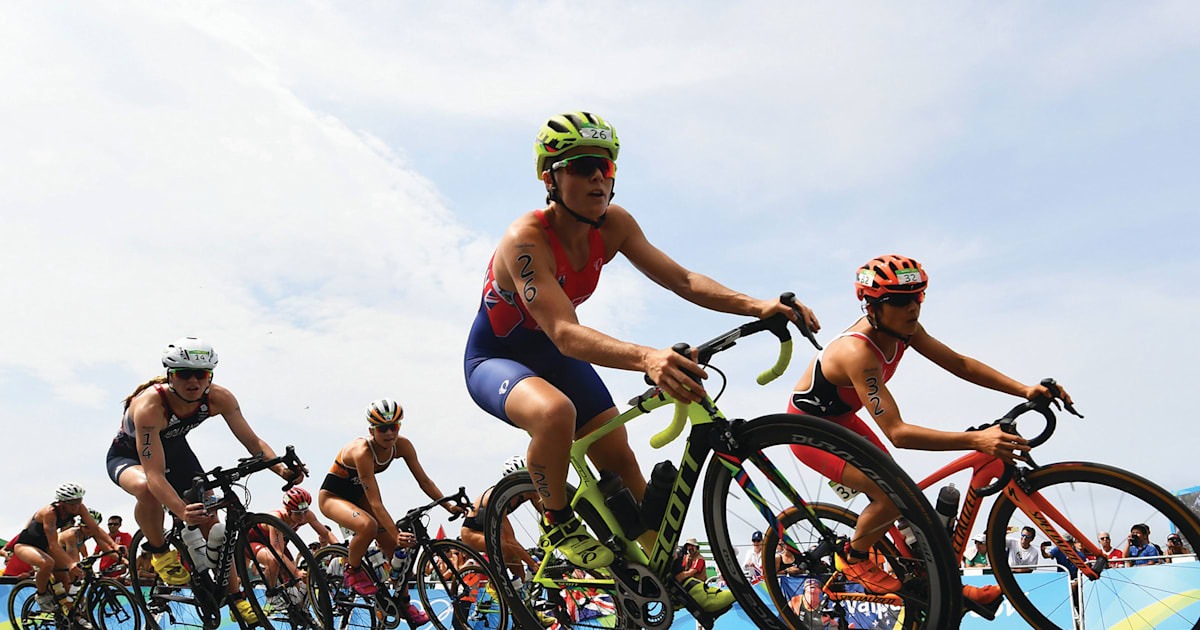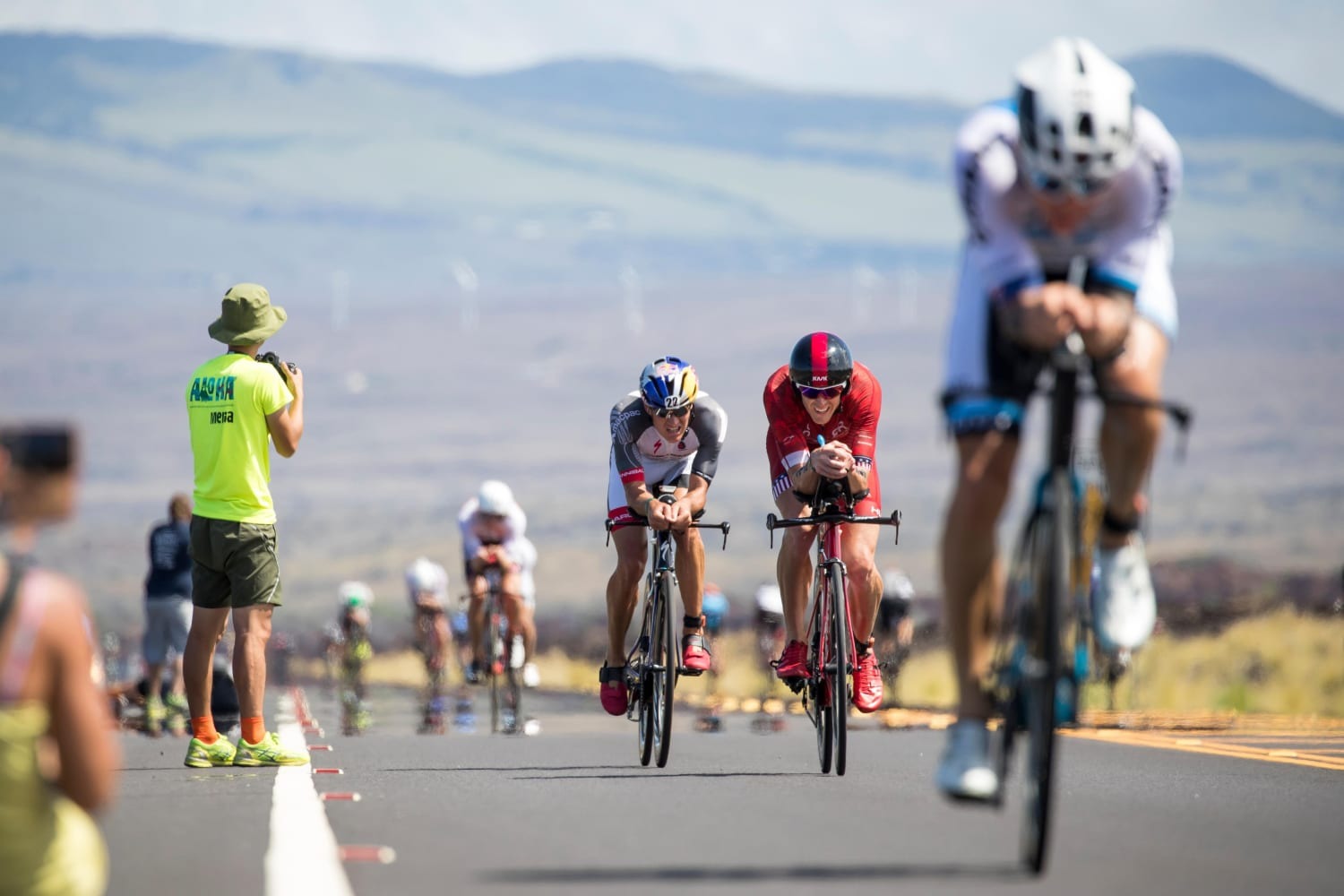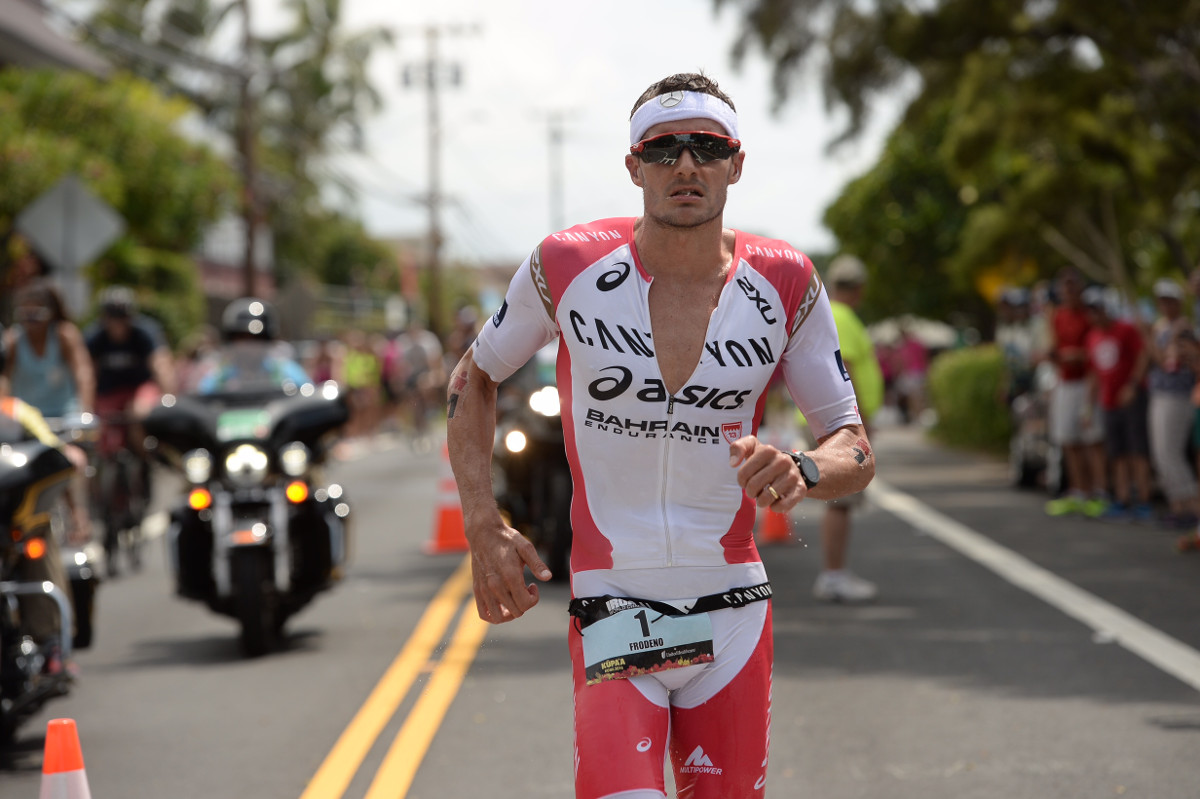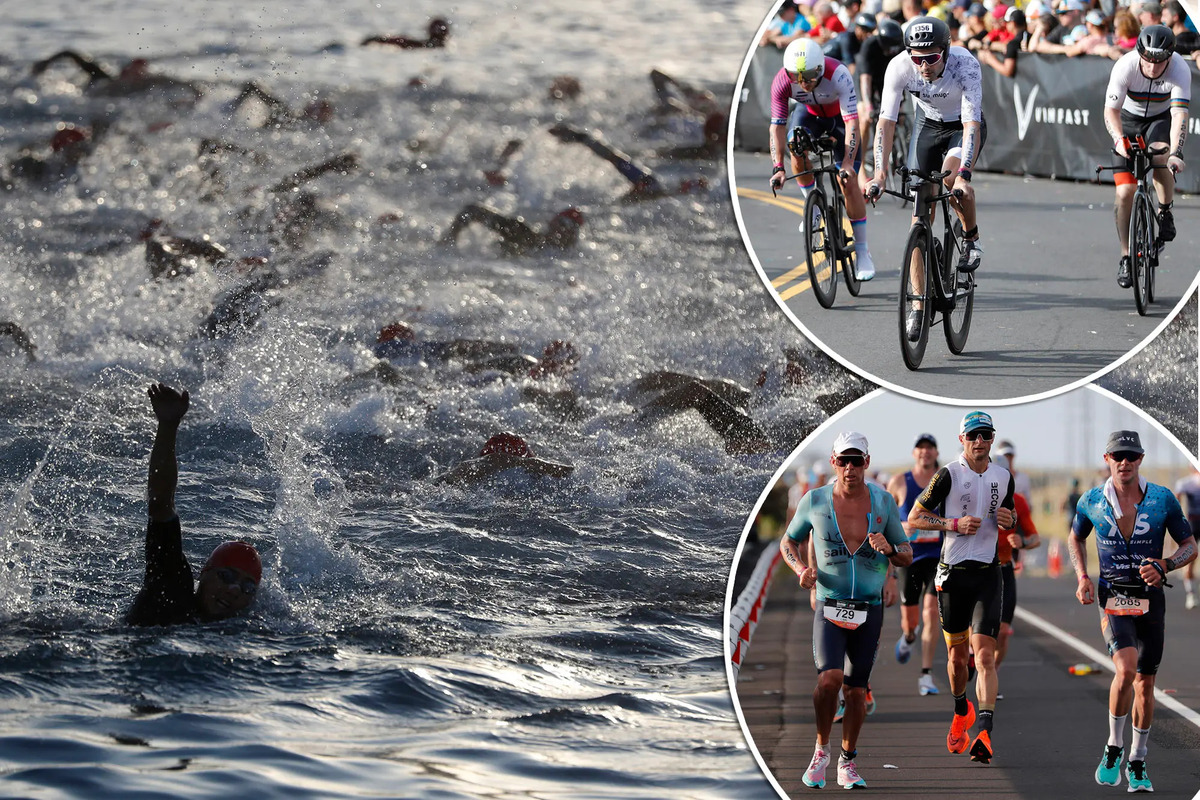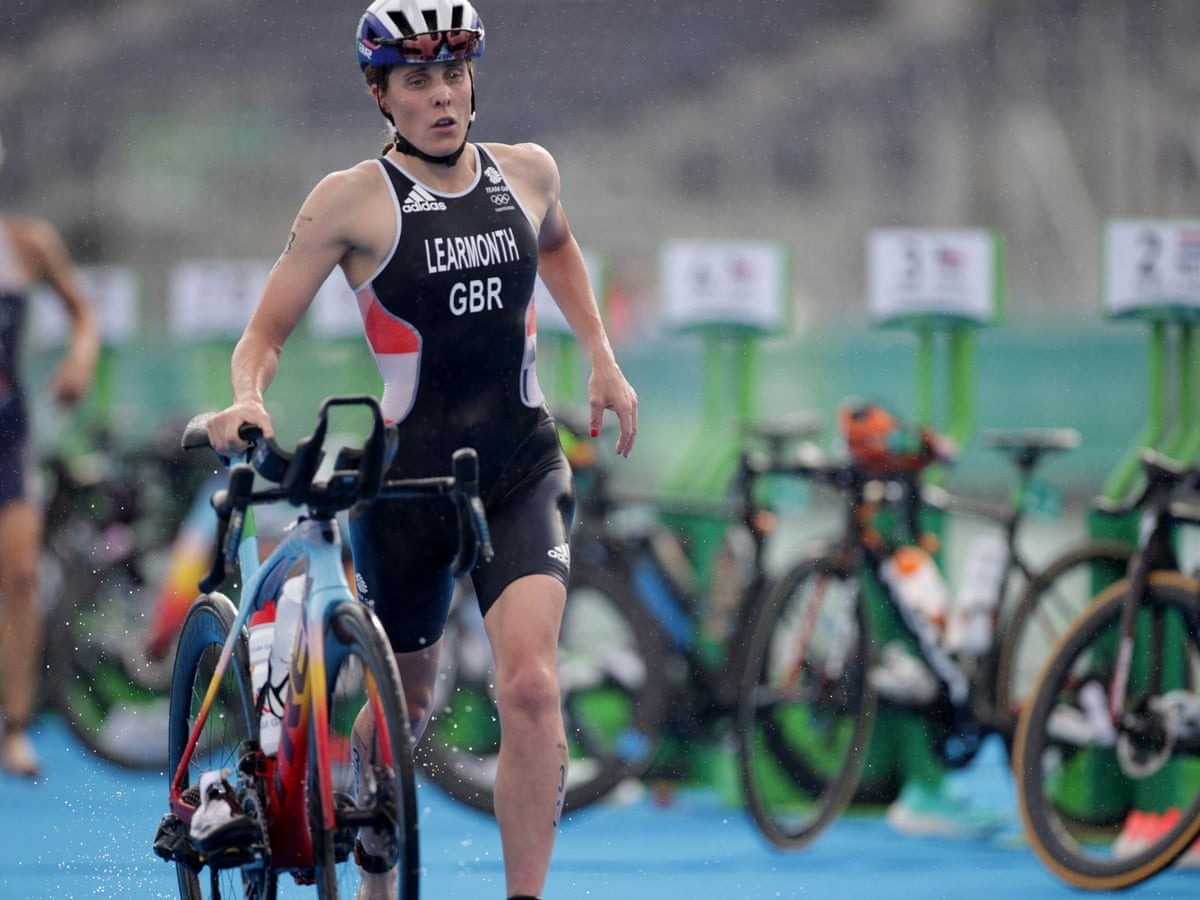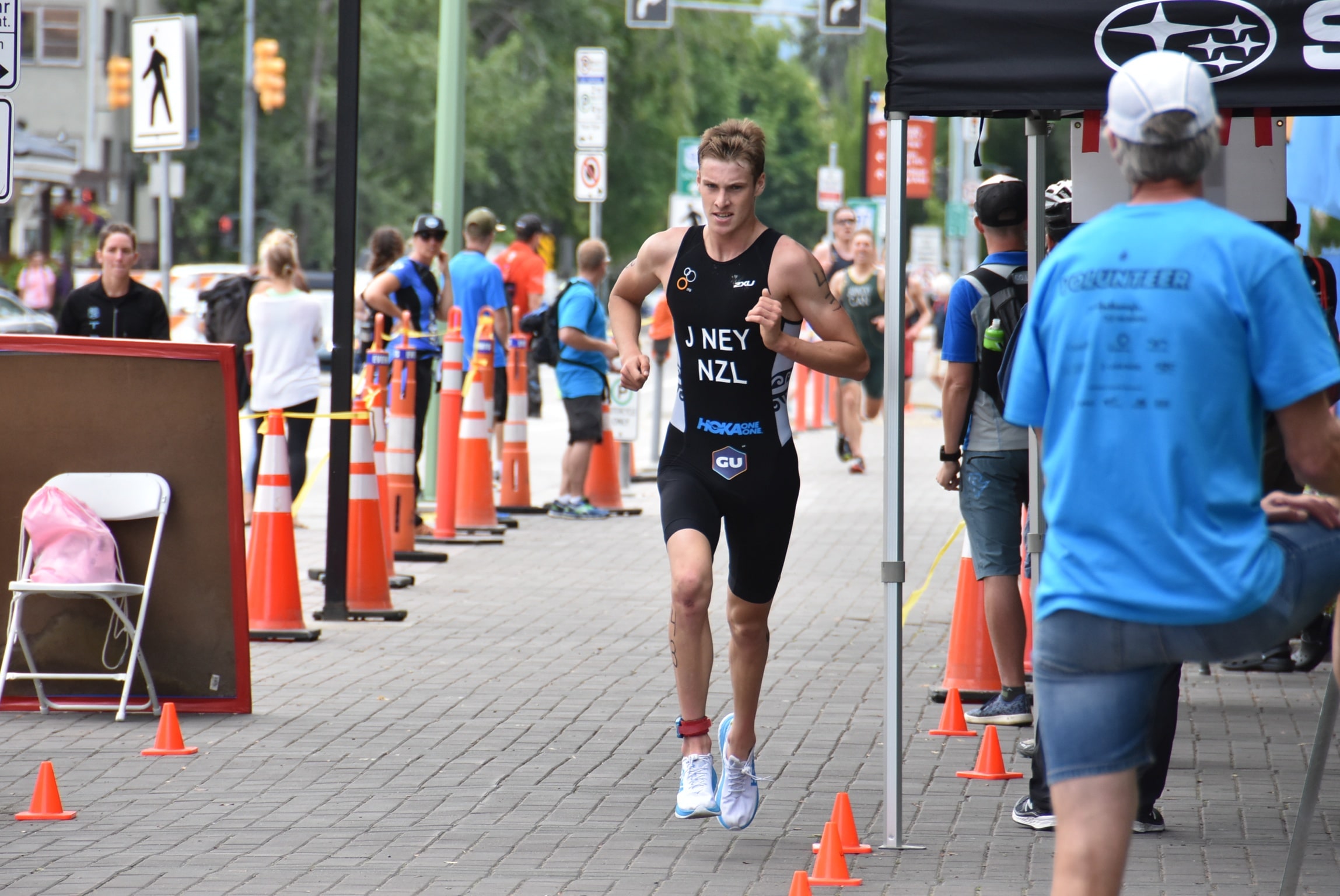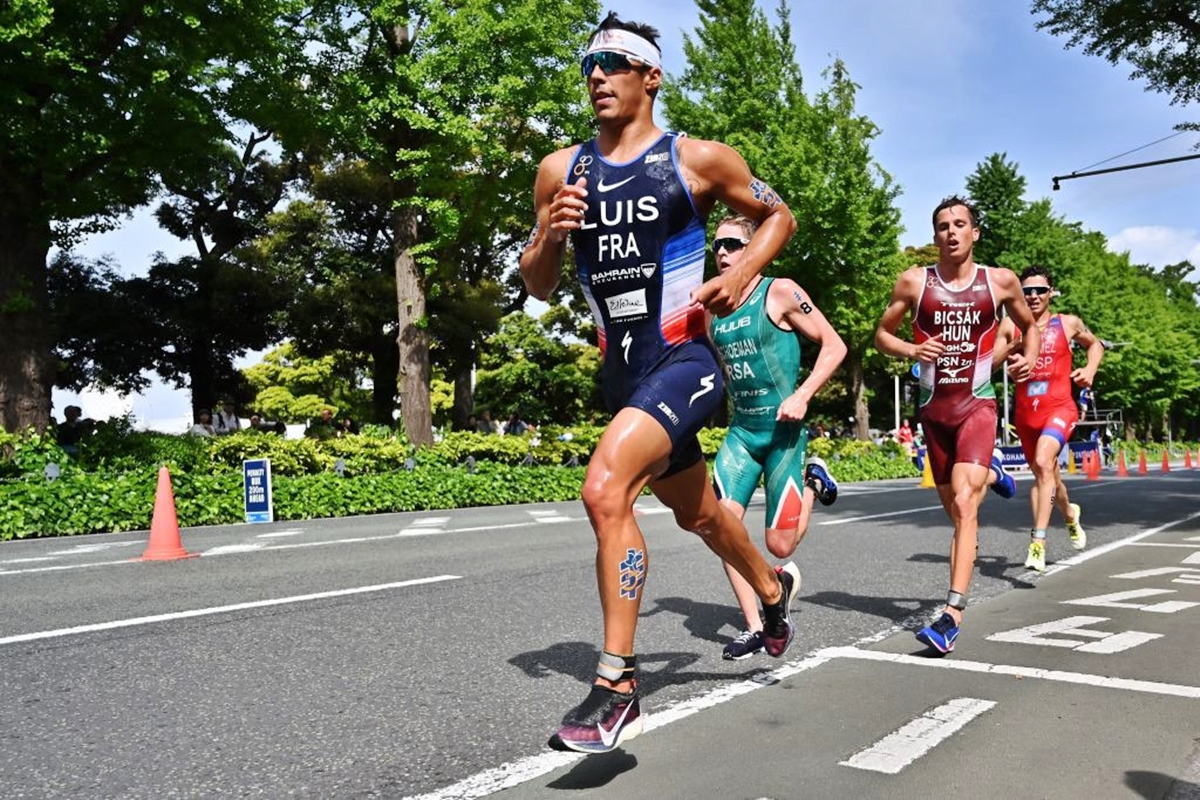Home>Misc>Featured>What Is Included In The Women’s Triathlon
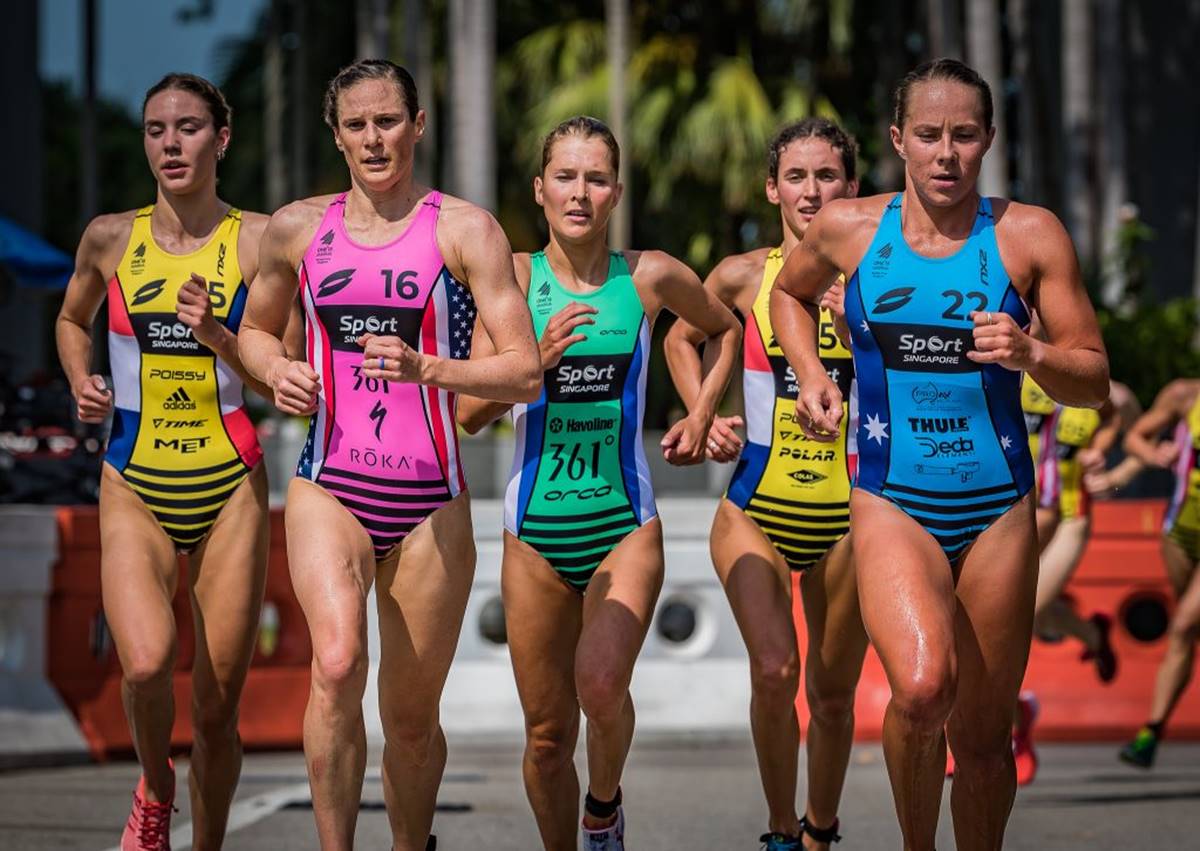

Featured
What Is Included In The Women’s Triathlon
Modified: October 3, 2023
Discover what is involved in the featured women's triathlon event and get ready to witness incredible athleticism and determination as female athletes compete in swimming, cycling, and running to reach the finish line.
Introduction
Welcome to the exciting world of women’s triathlon! This multi-sport event has gained immense popularity over the years, showcasing the incredible strength, endurance, and determination of female athletes. Combining swimming, cycling, and running, the women’s triathlon is a true test of physical and mental fitness.
In this article, we will explore the history of women’s triathlon, provide an overview of what the sport entails, discuss the training required to excel in this event, and delve into the equipment needed. We will also cover race day preparation, as well as the specifics of swimming, cycling, and running in a triathlon. Additionally, we will touch on the importance of transition areas and offer nutrition and hydration tips. So, if you’re ready to dive into the world of women’s triathlon and learn what it takes to succeed, let’s get started!
Women’s participation in triathlons has come a long way since the sport’s inception. Initially, triathlon was largely a male-dominated event, but over time, women began to break barriers and pave their own path in the sport. In 1981, the first Women’s Triathlon was held in San Diego, marking a significant milestone for female triathletes.
Since then, the sport has continued to grow, and in 2000, the women’s triathlon made its debut as an Olympic event. This recognition on the world stage further propelled women’s triathlon into the limelight, inspiring more women to take up the challenge and push their limits.
The women’s triathlon is characterized by its unique combination of swimming, cycling, and running. The distances covered in each segment may vary depending on the specific race, but most commonly, participants swim a distance of 750 meters to 1.5 kilometers, cycle for 20 to 40 kilometers, and run for 5 to 10 kilometers.
Training for the women’s triathlon requires a well-rounded approach, as athletes need to develop their skills and endurance in all three disciplines. It is crucial to incorporate swimming, cycling, and running into your training regimen, as well as dedicating time to transition practice, where you switch between the different segments of the race.
When it comes to participating in the women’s triathlon, having the right equipment is essential. While high-performance gear can enhance your performance, it is important to remember that you don’t need to break the bank to get started. A well-fitting swimsuit, goggles, a roadworthy bike, and comfortable running shoes are the basic necessities to get you going.
History of Women’s Triathlon
The history of women’s triathlon is a testament to the resilience and determination of female athletes. While triathlon has roots dating back to the 1970s, it was initially a predominantly male sport. However, as women began to challenge traditional gender norms and seek equal opportunities in sports, the women’s triathlon emerged as a platform for them to showcase their athletic prowess.
In 1981, the first Women’s Triathlon was held in San Diego, California. The event was a groundbreaking moment for female triathletes, providing them with a dedicated platform to compete and demonstrate their skills. The inaugural race witnessed a modest turnout, but it laid the foundation for the growth and popularity of women’s triathlon in the years to come.
As more women embraced the sport, the Women’s Triathlon became a platform for empowerment and inspiration. Women from all walks of life took up the challenge, defying cultural and societal expectations to pursue their passion for triathlon. Their tenacity in the face of adversity played a significant role in breaking down barriers and shifting perceptions of what women can achieve in sports.
The inclusion of women’s triathlon as an Olympic event in 2000 marked a major milestone for the sport. It provided global recognition and exposure, pushing women’s triathlon into the mainstream and encouraging more women to participate at all levels. Seeing female athletes compete on the world stage inspired countless others to take up the challenge and discover their own potential.
Over time, the women’s triathlon has progressed in terms of participation, competitiveness, and recognition. It has evolved from a niche event to a widely celebrated and respected sport. Today, women’s triathlon boasts a vibrant and diverse community of athletes, ranging from beginners and age-groupers to elite professionals.
Women’s triathlon events now take place all over the world, catering to athletes of varying abilities and aspirations. These events not only provide a platform for competition but also foster a sense of camaraderie and shared passion among participants.
Through the years, women’s triathlon has not only pushed boundaries and redefined what women can achieve in the world of sports but has also become a gateway for personal growth, empowerment, and self-discovery. It is a testament to the indomitable spirit and strength of female athletes, who have overcome obstacles and shattered glass ceilings in pursuit of their athletic dreams.
As we continue to celebrate the history of women’s triathlon, it is crucial to recognize and honor the trailblazing women who have paved the way for future generations. Their dedication, perseverance, and pioneering spirit have shaped the sport and opened doors for countless women to follow in their footsteps.
Overview of the Women’s Triathlon
The women’s triathlon is a thrilling and challenging multi-sport event that combines three disciplines: swimming, cycling, and running. It is a true test of an athlete’s physical and mental endurance, requiring a unique blend of skills and determination.
The distances covered in a women’s triathlon may vary depending on the specific race, but the most common distances include a swim of 750 meters to 1.5 kilometers, a bike ride of 20 to 40 kilometers, and a run of 5 to 10 kilometers. Participants strive to complete these segments as quickly as possible, aiming for the best overall time.
One of the distinguishing factors of a women’s triathlon is the transition between each discipline. These transition areas serve as the “switching points” where athletes move from one discipline to another. Efficient transitions are crucial to achieving a competitive time, as they can make a significant difference in the overall outcome of the race.
The order of the disciplines in a women’s triathlon is as follows: swimming, cycling, and running. The race typically begins with a mass start, where all participants dive into the water simultaneously. Depending on the size of the event, athletes may swim in open water such as lakes, rivers, or oceans, or they may compete in a pool-based triathlon, where the swimming segment takes place in a designated pool.
Once the swimming segment is completed, athletes transition to the cycling portion. They quickly change into their cycling gear and hop onto their bikes, navigating a predetermined course. Cyclists must be adept at handling their bikes, managing different terrains, and maintaining a steady pace to conserve energy for the subsequent run.
After completing the cycling segment, athletes then transition to the final discipline: running. This segment proves to be both physically and mentally demanding, as participants must push themselves to maintain their speed and endurance. The running portion takes place on a designated course, often incorporating various terrains such as roads, trails, or a mix of both.
Race strategy and pacing play a crucial role in the women’s triathlon. Athletes need to carefully manage their energy levels throughout each discipline to optimize their performance. Additionally, they must strike a balance between pushing their limits and avoiding burnout to ensure they have enough energy for the entire race.
The women’s triathlon is not only physically challenging but also mentally demanding. It requires focus, resilience, and the ability to stay composed under pressure. Athletes must overcome obstacles, maintain a positive mindset, and adapt to unforeseen circumstances that may arise during the race.
Participating in the women’s triathlon offers a unique opportunity for personal growth, self-discovery, and accomplishment. It challenges individuals to step out of their comfort zones, set ambitious goals, and work towards achieving them. Along the way, athletes develop discipline, perseverance, and the ability to overcome adversity – qualities that extend beyond the race itself.
As the popularity of women’s triathlon continues to grow, so does the sense of community and camaraderie among participants. The sport brings together women from all walks of life, united by their love for the triathlon and a shared goal of pushing their limits. The mutual support, encouragement, and inspiration found within the women’s triathlon community create an environment conducive to personal growth and empowerment.
Now that we have provided an overview of the women’s triathlon, it’s time to delve deeper into the specific aspects of training, equipment, race day preparation, and the individual disciplines of swimming, cycling, and running. So, let’s continue our journey into the world of women’s triathlon and explore the essential components for success!
Training for the Women’s Triathlon
Training for the women’s triathlon requires a comprehensive and well-balanced approach, as athletes need to develop their skills and endurance in swimming, cycling, and running. Successful triathlon training involves a combination of physical conditioning, technical skill development, and mental preparation.
First and foremost, it is important to establish a training plan that suits your fitness level, goals, and available time. If you are new to triathlon, start with a beginner-friendly program that gradually builds your endurance and introduces you to the specific disciplines.
When it comes to swimming, incorporating regular swimming sessions into your training routine is essential. Focus on improving your technique, efficiency, and overall swimming strength. Consider seeking guidance from a swim coach or joining a swimming group to refine your skills and build endurance.
Cycling plays a significant role in triathlon, so dedicating time to bike training is crucial. Work on increasing your cycling stamina, mastering different terrains, and practicing efficient pedaling techniques. Long rides, interval training, and hill repeats can help improve your cycling performance.
Running is the final discipline of the triathlon, and building running endurance is essential. Incorporate regular running sessions into your training plan, including both shorter, faster-paced runs and longer, steady-state runs. Gradually increase your mileage and consider adding interval training and hill workouts to boost your speed and strength.
Transition practice is often overlooked but is a critical component of triathlon training. Set up a transition area at home or at the training facility and practice moving quickly and smoothly between the disciplines. This includes changing gear, putting on shoes, and maintaining a calm and organized mindset during transitions.
In addition to the physical aspect, mental preparation is vital in the women’s triathlon. Triathlons can be physically demanding and mentally challenging, so developing mental stamina, focus, and resilience is crucial. Incorporate mindfulness, visualization techniques, and positive self-talk into your training to stay mentally sharp during the race.
It is important to remember that rest and recovery are just as important as training. Give your body time to recover and recharge, allowing it to adapt and grow stronger. Listen to your body and prioritize quality sleep, proper nutrition, and ample hydration to support your training endeavors.
Strength training and cross-training are beneficial complements to triathlon training. Incorporate strength exercises to build overall body strength, improve stability, and prevent injuries. Cross-training activities such as yoga, Pilates, or other cardiovascular exercises can help maintain overall fitness and add variety to your training regimen.
Lastly, consider participating in practice races or mock triathlons to familiarize yourself with the race environment, test your fitness level, and fine-tune your race-day strategies. These simulated events can help you identify areas for improvement and build confidence leading up to the actual race.
By following a structured training plan, focusing on skill development, and maintaining a balanced and positive mindset, you can prepare yourself for the physical and mental demands of the women’s triathlon. Stay consistent, embrace the journey, and celebrate your progress along the way.
Now that we have covered the important aspects of training, let’s move on to the next section, where we will explore the essential equipment needed for the women’s triathlon.
Required Equipment for the Women’s Triathlon
Participating in the women’s triathlon requires specific equipment to ensure a safe and successful race. While it is possible to invest in high-performance gear, it is important to remember that you don’t need to break the bank to get started. Here are the essential pieces of equipment you will need for the women’s triathlon:
- Swimsuit: A well-fitting swimsuit is crucial for the swimming portion of the triathlon. Look for a swimsuit that provides comfort, freedom of movement, and adequate support. Consider a one-piece or two-piece suit that is designed specifically for swimming and dries quickly.
- Goggles: Goggles are essential for clear vision and eye protection while swimming. Choose goggles that fit comfortably and provide a leak-free seal. There are various styles and sizes available, so try different ones to find the pair that works best for you.
- Swim Cap: Many triathlon events require participants to wear a swim cap provided by the organizers. However, having your own swim cap can be useful during training sessions. Look for a silicone or latex cap that fits snugly and reduces drag in the water.
- Bicycle: A roadworthy bike is crucial for the cycling portion of the triathlon. While there are specialized triathlon bikes available, a good-quality road bike or a hybrid bike can work well for beginners. Ensure that your bike is properly fitted to your body measurements and that it is in good working condition.
- Bike Helmet: Safety is paramount in the women’s triathlon, and a well-fitting bike helmet is a must. Look for a helmet that meets safety standards and provides proper ventilation. Make sure it fits securely on your head and adjust the straps for a snug fit.
- Running Shoes: Invest in a pair of comfortable running shoes that provide adequate support and cushioning. Visit a specialty running store to get fitted for the right pair that suits your running gait and foot type. Ensure that you have sufficient time to break in your shoes before race day.
- Clothing: Choose comfortable and breathable clothing for all three disciplines. Triathlon-specific clothing, such as tri suits or tri shorts and tops, offer convenience with quick-drying fabric and a streamlined design. If you choose to wear separate pieces, opt for moisture-wicking materials to keep you dry during the race.
- Transition Bag: A transition bag helps you stay organized on race day. You can pack your gear, including your swim cap, goggles, bike shoes, running shoes, helmet, and any necessary nutrition or accessories, in one convenient bag. Look for a bag with separate compartments to keep your items easily accessible.
- Nutrition and Hydration Equipment: Proper fueling is essential during the women’s triathlon. Consider investing in a hydration belt, water bottles, and energy gels or bars to keep yourself fueled and hydrated throughout the race. Practice using these items during training sessions to ensure they work well for you.
Remember to familiarize yourself with the rules and regulations of the specific race you are participating in, as some events may have additional equipment requirements. Additionally, it is recommended to have a basic toolkit and spare inner tubes for your bike in case of any mechanical issues during the race.
As you progress in the sport and gain more experience, you may choose to invest in additional gear such as a triathlon wetsuit for open water swims, aerobars for your bike, and a race belt to easily display your race number. However, these items are not mandatory for beginners and can be acquired as you become more involved in the sport.
Now that we have covered the essential equipment needed for the women’s triathlon, let’s move on to the next section, where we will discuss race day preparation to ensure a smooth and successful experience.
Race Day Preparation
Race day is an exhilarating and nerve-wracking experience for women participating in the triathlon. Proper preparation and planning are key to ensuring a smooth and successful race. Here are some essential tips to help you make the most of your race day:
- Arrive Early: Plan to arrive at the race venue early to allow enough time for parking, registration, and setting up your transition area. This will help you avoid unnecessary stress and give you ample time to mentally prepare for the race.
- Check the Course: Familiarize yourself with the race course, including the swimming route, bike course, and running course. Study the maps, elevation profiles, and any specific rules or regulations that apply to the race. Knowing what to expect will boost your confidence and help you plan your race strategy.
- Set up Your Transition Area: Arranging your gear in your transition area efficiently is crucial. Lay out your equipment in the order in which you will need them during the race. Place your bike, helmet, shoes, and any nutrition or accessories in a neat and organized manner, making them easily accessible during transitions.
- Warm-Up: Prior to the race, engage in a dynamic warm-up routine that includes light jogging, dynamic stretches, and mobility exercises. This will help wake up your muscles and prepare them for the physical demands of the race.
- Stay Hydrated and Nourished: Drink plenty of water in the hours leading up to the race to ensure hydration. Consume a light, easily digestible meal a few hours before the race to provide your body with the necessary energy. Avoid trying new foods or drinks on race day to prevent any digestive discomfort.
- Mental Preparation: Race day nerves are a common occurrence, but it’s important to stay focused and calm. Engage in relaxation techniques, meditation, or deep breathing exercises to center yourself. Visualize yourself performing well and crossing the finish line, cultivating a positive and confident mindset.
- Follow Race Instructions: Pay attention to pre-race instructions provided by the race organizers. They will provide important details about the start of the race, any safety precautions, and any last-minute updates or changes. Make sure you are aware of any specific rules or guidelines that need to be followed during the race.
- Start Strong, Pace Yourself: Begin the race with a steady and comfortable pace, conserving energy for the latter parts of the event. Avoid the temptation to go out too fast, as this can lead to exhaustion later on. Trust in your training and race strategy, and maintain a consistent effort throughout the race.
- Stay Focused and Enjoy the Experience: During the race, stay focused on your technique, breathe rhythmically, and stay present in the moment. Embrace the cheers of the crowd and the camaraderie with fellow athletes. Remember why you chose to participate and savor the experience.
- Celebrate Your Accomplishment: Crossing the finish line is an incredible accomplishment, regardless of your race time. Take a moment to celebrate your journey, reflect on your achievements, and appreciate the dedication and commitment it took to reach the finish. Be proud of yourself and enjoy the post-race festivities.
By following these race day preparation tips, you can optimize your performance and make your women’s triathlon experience memorable and rewarding. Remember, every race is an opportunity to learn and grow, so approach it with enthusiasm, determination, and a sense of adventure!
Now that we’ve covered race day preparation, it’s time to dive into the specifics of each discipline – swimming, cycling, and running – in the women’s triathlon. So, let’s continue our journey toward mastering the skills needed for success!
Swimming in the Women’s Triathlon
Swimming is the first discipline in the women’s triathlon, and for many participants, it can be a challenging aspect of the race. Whether you’re a seasoned swimmer or a beginner, focusing on technique, endurance, and mental preparation can help you excel in the swimming segment of the triathlon.
The swim portion of the women’s triathlon can take place in a pool or open water, such as a lake, river, or ocean. Regardless of the venue, it is important to familiarize yourself with the specific swim course prior to the race.
Here are some essential tips to help you navigate the swim segment successfully:
- Practice Open Water Swims: If the race takes place in open water, it is crucial to practice swimming in similar conditions beforehand. Open water swimming can present different challenges compared to pool swimming, such as currents, waves, and limited visibility. Get comfortable with these conditions to build confidence and adaptability.
- Work on Technique: Focus on improving your swim technique to maximize efficiency and conserve energy. Consider taking swimming lessons or working with a coach to refine your stroke and breathing technique. Pay attention to proper body alignment, a smooth and controlled kick, and a relaxed but powerful arm pull.
- Build Endurance: Swimming requires a certain level of cardiovascular fitness, so incorporate regular swim workouts into your training plan. Gradually increase your swim distance and intensity to build endurance. Include interval training, speed work, and longer steady-state swims to improve your overall swimming stamina.
- Practice Sight and Navigation: In open water swims, sighting is essential to stay on course. Practice lifting your head out of the water to aim for markers along the swim course. This will help you swim in a straight line and avoid unnecessary detours, saving both time and energy.
- Simulate Race Starts: In pool-based triathlons, simulated race starts often involve a mass start where all participants enter the water simultaneously. Practice race starts to get comfortable with the chaos and jostling that can occur. Incorporate short but intense swimming intervals to simulate the initial frenzy of the swim leg.
- Breathe Bilaterally: Breathing bilaterally, or on both sides, can help maintain balance and rhythm in the water. Practice alternating your breathing between both sides during training sessions to build symmetry and improve overall stroke efficiency.
- Wetsuit Considerations: In some open water triathlons, wetsuits are allowed or even mandatory. If you plan to wear a wetsuit, make sure to practice swimming in it prior to race day. Become familiar with how the wetsuit affects your swimming technique and buoyancy, and ensure a proper fit for optimal performance.
- Stay Calm and Focused: As with any discipline in the women’s triathlon, mental preparation is key. Stay calm, focused, and confident during the swim leg. Maintain a positive mindset, embrace the surroundings, and visualize yourself swimming smoothly and efficiently towards your goal.
Remember, the swim portion of the triathlon is just one part of the race. By practicing and honing your swimming skills, you can gain the confidence needed to start the triathlon strong and set yourself up for success in the following disciplines.
Now that we’ve covered swimming, let’s move on to the next section where we will explore cycling – the second discipline in the women’s triathlon.
Cycling in the Women’s Triathlon
Cycling is the second discipline in the women’s triathlon and is often considered the longest segment in terms of both distance and time. It is a crucial part of the race where participants can gain momentum and make up ground. To have a successful cycling leg, it is essential to focus on technique, endurance, and strategy.
Here are some key tips to help you excel in the cycling portion of the women’s triathlon:
- Master Bike Handling Skills: Familiarize yourself with your bike and develop good bike handling skills. Practice cornering, braking, and gear shifting to enhance your control and confidence while riding. This will allow you to navigate turns and any technical aspects of the racecourse smoothly.
- Train for Different Terrains: Triathlon cycling courses can include various terrains such as flat stretches, hills, or even off-road segments. Train on different types of terrain to prepare your body and mind for the challenges you may encounter during the race. Practice uphill climbs, downhill descents, and braking techniques specific to different surfaces.
- Focus on Cadence and Pacing: Maintain a consistent and efficient cadence (pedal revolutions per minute) throughout the cycling leg. Aim for a cadence between 80-100 revolutions per minute. This will help you use your energy more effectively and prevent fatigue.
- Learn Drafting Techniques: In some triathlons, drafting (riding closely behind another cyclist to conserve energy) is allowed. If this is the case, learn how to draft properly by positioning yourself in the slipstream of the rider in front. Practice maintaining a safe distance and switching positions strategically to maximize your efficiency.
- Monitor Nutrition and Hydration: Stay properly fueled and hydrated during the cycling leg to maintain your energy levels. Practice consuming nutrition and fluids while riding to get accustomed to doing so in a race scenario. Use sports drinks, gels, or energy bars that work well for you and won’t cause any digestive issues.
- Break the Bike Leg Mentally: Divide the cycling leg into smaller segments or landmarks to make it mentally manageable. Set intermediate goals, focus on reaching each one, and mark your progress throughout the ride. This will help keep you motivated and mentally engaged throughout the entire cycling leg.
- Position Yourself Optimally: Position yourself properly on the bike to optimize both aerodynamics and power output. Maintain a forward-leaning position with a slight bend in your elbows and a flat back. This will reduce wind resistance and aid in speed. Experiment with different hand positions on the handlebars to find what is most comfortable and efficient for you.
- Manage Energy Expenditure: Pace yourself during the cycling leg to ensure you have enough energy for the entire race. Avoid going all out at the beginning and find a sustainable effort level. Remain aware of your heart rate and breathing, and adjust your intensity accordingly, conserving energy for the run leg to follow.
- Adapt to Changing Conditions: Be prepared to adjust your strategy based on weather conditions, wind, and other external factors. Stay flexible during the race and make any necessary modifications to your technique or pacing to optimize your performance.
By focusing on these cycling tips, you can improve your performance and make the most of the second leg of the women’s triathlon. Remember to include cycling-specific training sessions in your overall training plan to build both endurance and cycling-specific strength.
Now, let’s move on to the next section where we will explore the final discipline of the women’s triathlon – running.
Running in the Women’s Triathlon
The final discipline in the women’s triathlon is running. After completing the swim and cycling segments, the run requires a different set of skills and mental fortitude. Building running endurance, maintaining good form, and managing fatigue are key to performing well in this last leg of the race.
Here are some essential tips to help you excel in the running portion of the women’s triathlon:
- Progressive Brick Workouts: Incorporate brick workouts into your training routine, which involve transitioning quickly from cycling to running. By practicing this transition in training, you will condition your body to adjust to the change in muscle activation and momentum.
- Improve Running Technique: Focus on maintaining good running form throughout the run segment. Keep your posture upright, shoulders relaxed, and arms swinging freely. Aim for a mid-foot strike, landing lightly and pushing off with each step. Engage your core for stability and maintain a cadence that feels natural and efficient.
- Train for Running Endurance: Develop your running endurance through regular running workouts. Include longer, slower-paced runs to build endurance and shorter, faster-paced runs to improve speed. Incorporate interval training and hill repeats to enhance both cardiovascular and muscular endurance.
- Hydrate and Fuel Strategically: Stay hydrated during the run leg by consuming fluids at aid stations if available. Practice incorporating small sips of water or sports drinks into your training runs to understand your hydration needs. Use gels, energy chews, or other easily digestible foods to provide a quick source of energy if needed.
- Pace Yourself: Start the run segment at a comfortable pace and find a rhythm that you can sustain throughout the distance. Avoid starting too fast, as it can lead to fatigue later in the run. Stay mentally focused and embrace the challenge, breaking the run into smaller milestones to maintain motivation.
- Use Your Transitions Strategically: Make optimal use of the transition zones by mentally preparing for the run during the bike-to-run transition. Take a moment to gather your thoughts, refocus your mindset, and mentally prepare for the physical demands of the run.
- Engage in Mental Strategies: Running can be mentally challenging, especially towards the end of the triathlon. Utilize mental strategies such as positive self-talk, visualization, or focusing on small goals to stay motivated and push through fatigue. Embrace the support of fellow athletes and spectators along the race course.
- Practice Bricks and Negative Splits: Train with bricks by completing short runs immediately after cycling to simulate the fatigue experienced during the race. Practicing negative splits, where you run the second half of the run faster than the first, can help train your body and mind for strong finishes.
- Practice Efficient Transitions: Transitioning between cycling and running efficiently is essential. Practice removing your cycling shoes and helmet quickly and putting on your running shoes smoothly. Visualize and rehearse these transitions during your training sessions to improve your speed and confidence on race day.
By incorporating these tips into your training and race day preparations, you can optimize your performance in the running portion of the women’s triathlon. Remember to put in the miles, practice good form, and stay mentally strong to finish the race strong.
Now that we’ve covered running, let’s move on to the next section where we will explore the importance of transition areas in the women’s triathlon.
Transition Areas in the Women’s Triathlon
Transition areas are an integral part of the women’s triathlon, serving as the midpoint between each discipline and allowing athletes to efficiently switch from one segment to the next. Proper organization, quick transitions, and effective use of the transition area can greatly impact overall race performance. Let’s explore the key aspects of transition areas in the women’s triathlon:
- Set-Up and Organization: When arriving at the transition area, choose a spot to set up your gear. Familiarize yourself with the layout and organizing system designated by the race organizers. Lay out your equipment in an organized manner, placing everything you will need within reach. This includes your bike, helmet, cycling shoes, running shoes, and any additional items such as nutrition or accessories.
- Practice Transition: Transition times can make a significant difference in your overall race time. Practice transitioning between each discipline during your training sessions to streamline your movements and reduce the time spent in the transition area. Focus on making smooth and efficient transitions, such as quickly changing shoes and gear, and mentally rehearse your transition plan.
- Know the Flow: Familiarize yourself with the flow of the transition area, including the layout of the entrance and exit points. Study the path you will take as you enter and exit the transition area to minimize confusion or time wasted during the race. Being familiar with the flow will help you navigate quickly and smoothly.
- Mark Your Spot: Transition areas can be crowded with many participants’ gear. To easily locate your spot during the race, consider using a brightly colored towel, a unique marker, or a balloon tied to your bike rack as a visual identifier. This will help you spot your gear quickly and efficiently, especially during the fast-paced transitions.
- Keep Tidy and Organized: Staying organized within your designated space is essential to avoid confusion and save time. Keep your gear neatly arranged and avoid sprawling your items into neighboring spaces. Be considerate of other athletes and keep the transition area tidy to ensure a smooth experience for everyone.
- Practice Quick Shoe Changes: Switching shoes efficiently can be a game-changer in the transition area. Practice the art of quick shoe changes by loosely pre-lacing your running shoes, using elastic laces, or utilizing slip-on shoes. This will minimize the time spent tying or adjusting shoelaces, allowing you to get on with the race swiftly.
- Mentally Prepare: Use the transition area as a mental checkpoint and a space for focused preparation. During transitions, mentally prepare yourself for the upcoming discipline. Visualize the next segment, set goals, and adjust your mindset accordingly. This mental switch will help you transition smoothly from one discipline to the next.
- Follow Race Rules: Familiarize yourself with the specific rules and regulations of the race regarding the transition area. Be aware of any restrictions or guidelines regarding gear placement, helmet usage, or other essential safety protocols. Adhering to these rules will contribute to a fair and safe race environment for all participants.
- Stay Calm and Composed: Transition areas can be chaotic and bustling with activity. Stay calm and composed during your transitions, focusing on your own race plan and not getting swept up in the rush. Trust your training and stay confident in your abilities as you move between disciplines.
By implementing these strategies and practicing efficient transitions, you can optimize your time in the transition area and maintain flow throughout the women’s triathlon. A well-executed transition can provide a valuable edge in the race and contribute to an overall successful performance.
Now that we’ve covered the importance of transition areas, let’s move on to the next section where we will delve into the significance of nutrition and hydration in the women’s triathlon.
Nutrition and Hydration for the Women’s Triathlon
Nutrition and hydration play a crucial role in the women’s triathlon, ensuring adequate fueling and optimal performance throughout the race. Properly nourishing and hydrating your body before, during, and after the event can significantly impact your energy levels, endurance, and recovery. Let’s explore the key considerations for nutrition and hydration in the women’s triathlon:
- Pre-Race Nutrition: Prior to the race, focus on consuming a balanced meal that includes carbohydrates for energy, proteins for muscle maintenance, and some healthy fats for sustained energy. Aim to eat a light, easily digestible meal around 2-3 hours before the race start to prevent any discomfort during the swim. Avoid trying new foods on race day to minimize the risk of digestive issues.
- Pre-Race Hydration: Hydrate well in the days leading up to the race. Drink plenty of water and fluids to ensure your body is well-hydrated before the triathlon. On race day, continue to hydrate by consuming water or sports drinks leading up to the start, particularly if the weather is warm or humid.
- During the Race: During the triathlon, maintaining hydration and fueling is essential, especially during longer distances. Carry energy gels, chews, or other easily digestible snacks for quick and convenient fueling. Use aid stations during the race to hydrate by drinking water or sports drinks as required. Practice consuming these items during training to determine the amounts and timing that work best for you.
- Hydration on the Bike: On the cycling leg, maintain your hydration levels by taking regular sips from your water bottle or hydration system. Aim to drink approximately every 10-15 minutes, adjusting the frequency based on weather conditions and personal sweat rate. Consider using electrolyte drinks to replace lost minerals and maintain hydration balance.
- Fueling on the Run: During the run, continue to fuel your body by consuming small amounts of energy gels, chews, or other easily portable snacks. Stay hydrated at aid stations by drinking water or sports drinks, as needed. Be mindful of the sensations of hunger, thirst, and fatigue and adjust your intake accordingly, focusing on sustained energy throughout the run.
- Post-Race Recovery: After the race, prioritize post-race recovery nutrition to aid in muscle repair and replenishment. Consume a balanced meal that includes carbohydrates for glycogen replenishment and proteins for muscle recovery. Adequate hydration is also important, so continue to drink fluids and electrolyte-rich beverages.
- Personalize Your Nutrition Plan: Every athlete is different, so it is crucial to personalize your nutrition and hydration plan based on your unique needs and preferences. Experiment and practice during your training sessions to determine what works best for you in terms of types of fuel, quantities, and timing. Seek guidance from a sports nutritionist if needed.
- Practice Nutrition and Hydration: Integration is key. During training sessions, practice your nutrition and hydration strategies to ensure they work well for you. Experiment with different brands, flavors, and consistencies of fueling products to find what is most easily digestible and enjoyable for you. Train your body to become efficient in utilizing these fuel sources during the race.
- Listen to Your Body: Pay attention to your body’s cues during the race. Stay in tune with your hunger and thirst levels, fatigue, and overall well-being. Adjust your nutrition and hydration plan accordingly, ensuring that you are meeting your body’s needs. Avoid overeating or consuming excessive amounts of fluids that may lead to discomfort or digestive issues.
By prioritizing proper nutrition and hydration in the women’s triathlon, you can optimize your performance, enhance your endurance, and aid in your overall race success. Find what works best for you, practice during training, and listen to your body’s signals to fuel and hydrate effectively throughout the race.
Now that we’ve covered nutrition and hydration, let’s move on to the final section where we will discuss some helpful tips for success in the women’s triathlon.
Tips for Success in the Women’s Triathlon
Participating in the women’s triathlon is an exciting and challenging endeavor that requires dedication, preparation, and the right mindset. Here are some valuable tips to help you achieve success in the women’s triathlon:
- Set Clear Goals: Determine your goals for the race, whether they are focused on completing the event, achieving a personal best time, or placing in your age group. Having clear goals will provide a sense of purpose and motivation throughout your training and on race day.
- Follow a Structured Training Plan: Create or enlist the help of a qualified coach to develop a training plan tailored to your fitness level, goals, and available time. A structured plan will ensure that you train effectively and progressively, preparing your body for the physical demands of the triathlon.
- Be Consistent: Consistency is key in triathlon training. Make training a regular part of your routine and commit to your workouts, even on days when motivation is lacking. Consistency builds fitness, mental resilience, and the confidence needed to tackle the challenges of the race.
- Focus on Technique: Pay attention to your technique in each discipline. Seek feedback from coaches or join training groups to improve your swimming stroke, cycling form, and running gait. Making small adjustments can lead to significant improvements in efficiency and overall performance.
- Practice Transitions: Efficient transitions can save valuable time during the race. Incorporate transition practice into your training sessions to become comfortable with switching efficiently between disciplines. Work on quickly changing gear, slipping into your shoes, and mentally preparing for the next stage.
- Train for the Specifics: Tailor your training to the specific demands of the women’s triathlon. Incorporate open water swimming practice, cycling on similar terrains to the racecourse, and transition-focused workouts. By training specifically for each discipline, you’ll build confidence and be better prepared on race day.
- Listen to Your Body: Pay attention to your body’s signals during training and on race day. Rest when needed, address any injuries or discomfort promptly, and adjust your training plan as necessary. By listening to your body, you can maintain optimal performance and avoid potential setbacks.
- Stay Mentally Strong: Mental resilience is just as important as physical fitness in the women’s triathlon. Develop mental strategies to overcome challenges, stay positive, and maintain focus throughout the race. Visualization, positive self-talk, and practicing mindfulness can help you stay mentally strong and perform at your best.
- Join a Supportive Community: Surround yourself with like-minded individuals who share your passion for triathlon. Join training groups, triathlon clubs, or online communities to find support, camaraderie, and valuable training advice. The support and encouragement from fellow athletes can make a significant difference in your journey.
- Embrace the Journey: Enjoy the process and embrace the journey of training and participating in the women’s triathlon. Each workout, each milestone, and each race experience is an opportunity for growth and self-discovery. Remember to celebrate your accomplishments, no matter how big or small, along the way.
By following these tips, you can enhance your preparation, build your confidence, and set the stage for a successful women’s triathlon experience. Remember that every step of the journey is part of your overall achievement, so stay focused, believe in yourself, and enjoy the incredible adventure that is the women’s triathlon!
Conclusion
Participating in the women’s triathlon is a remarkable endeavor that combines swimming, cycling, and running into one exhilarating event. It challenges your physical strength, mental resilience, and determination. Throughout this article, we explored the various aspects of the women’s triathlon, including its history, overview, training, required equipment, race-day preparation, swimming, cycling, running, transition areas, nutrition and hydration, and tips for success.
The women’s triathlon has come a long way, thanks to the trailblazing athletes who shattered barriers and paved the way for female participation in the sport. It has evolved into a more inclusive and celebrated event that showcases the incredible strength, endurance, and determination of women. Whether you’re a seasoned triathlete or a beginner, prioritizing training, proper nutrition, and hydration is crucial to performing your best on race day.
By following a structured training plan, focusing on technique, and staying mentally strong, you can conquer the challenges of each discipline and excel in the women’s triathlon. Practice efficient transitions, set clear goals, and surround yourself with a supportive community that shares your passion for the sport.
Remember to embrace the journey and find joy in each step of the process. Every training session, race milestone, and personal achievement is a testament to your dedication and growth as an athlete. Whether you’re aiming for a specific time, a podium spot, or simply the satisfaction of crossing the finish line, always cherish the experience and celebrate your accomplishments along the way.
As you embark on your women’s triathlon journey, remember that success is not only about the outcome but also about the lessons learned, the friendships forged, and the personal growth you experience. Embrace the challenge, stay focused, and most importantly, enjoy the exhilarating adventure that the women’s triathlon offers.
